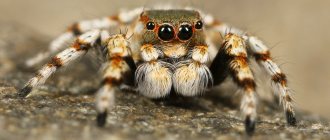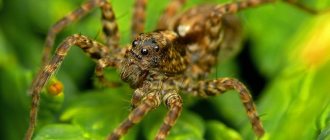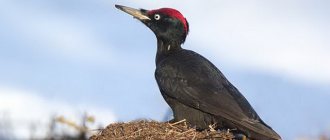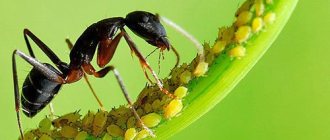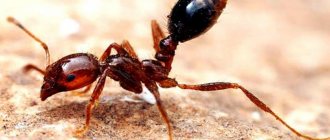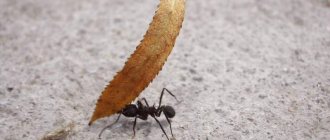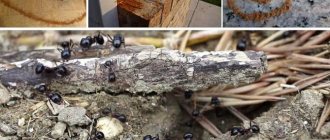General introduction to ants
From a biological point of view, ants belong to the Hymenoptera. Their size varies depending on the type. These are social insects that live in colonies. They build their anthills from small particles in the soil or wood. These families are well organized and have good communication systems to ensure that all their actions are coordinated. Interestingly, some species of ants communicate in their own language, with the help of which they convey complex information. Most of them have symbiotic relationships with certain insects, plants, fungi and bacteria.
Each member of the colony knows their place and clearly fulfills their assigned role.
- Females. These are the founders of the anthill. In most colonies there is only one female. She lays eggs so that her anthill constantly grows and replenishes.
- Males. They are needed for fertilization of females.
- Working individuals. Thanks to them, the anthill lives. They build a house, guard it, clean it, supply all the inhabitants with food, and take care of the larvae.
It is worth noting that males and females are equipped with wings, but worker ants do not have them. Also, some types of ants have a sting.
Ant hierarchy
Ant Hierarchy
One of the interesting facts about ants is the strict distribution of roles and responsibilities among them. In most species of these insects, the clan is headed by one or more queens. Only she has the right to reproduce and her main task is to produce offspring. She lays eggs from which larvae develop.
Lifestyle
After the female has been fertilized, she loses her wings and goes in search of a place where she will lay the foundation of her anthill of several rooms and lay eggs there. The male never survives. The queen feeds the larvae with saliva. The first “batch” of emerging workers begins to engage in construction and food production. After enough worker ants appear, the female only lays eggs, and the colony takes care of the larvae (white, helpless worms). After five molts, pupae form and stop feeding. Adult females and workers emerge from them. This process lasts throughout the growing season. Males are reborn only in spring.
The main diet is plant juice from aphid secretions. But at the moment when they take care of the larvae, the ants feed on other insects.
Ants: species in Russia and their characteristics
It is known that these insects are able to adapt to various conditions and colonize any landscape. But each individual species has its own characteristics, and this is connected not only with external characteristics. Each of them has their own differences in behavior and lifestyle. Therefore, if we learn more deeply about these insects, even those that live on our territory, they may seem no less interesting to us than those that live only in the tropics. It has already been mentioned how many species of ants there are in the world, so it is worth noting that more than 125 species of them are found in Russia. But in different sources this figure varies and sometimes reaches 300. The most familiar of them are red forest, meadow, pharaoh, house, termites, leaf cutters and others. Let's look at some types of ants. Photos of some insects will be included.
It's time to fly!
The table below shows the summer periods for most species, collected on the basis of many years of observations by myrmecologists. The wide range should be understood as follows: in the southern regions of Russia, summer begins earlier, in the northern regions later. This process is also affected by weather conditions. For example, if the year is cold, the summer may be delayed for several weeks.
It is important to remember that only females can organize a new colony.
They are usually much larger than males. While the females have wings, the years are considered incomplete, since they have not yet been fertilized and will not be able to give rise to a new life. Therefore, fishing begins only a few days after the beginning of summer, selecting individuals without wings.
How to catch an ant
Catch only females, doing this as carefully as possible so as not to damage them - these insects are very fragile and sensitive, so it is important not to scare or injure them during fishing. And it is best to purchase a queen with brood in a specialized store, where at any time of the year the desired type of ants is available, which has undergone selection and treatment against parasites, and can ensure the stable growth of the future colony!
Red forest
For its habitat, this species chooses mixed, coniferous and deciduous forests that are more than 40 years old. Females and workers are distinguished by their red-brown color. Their length is approximately 7-14 mm. The head of this ant is oblong and the body is dense. Males are black, with reddish or yellowish legs. Their families are single, divided into three castes. One nest can contain from 800 thousand to 1 million individuals. Mating flights begin from May to the end of June. The surprising thing is that only workers, males or females emerge from the eggs. It all depends on the needs of the family.
This type of ant can harm fruit trees due to the fact that they breed aphids. But at the same time they also benefit the gardens. These insects destroy many pests that cause damage to crop plants. At the same time, ants pay special attention to those insects in which mass reproduction begins. It has been calculated that in a large anthill these insects can bring up to 21 thousand pest pupae in one day. Therefore, one such anthill is capable of protecting approximately a hectare of coniferous forest.
Types of ants
Reaper Ant
The steppe reaper ant (European) is a very thrifty insect. Nutritional characteristics differ from their relatives. Reapers feed their larvae with ground plant grain, while their relatives feed their offspring with animal protein.
Stray Ants
Stray ants are constantly migrating, hence the name. When food runs out in a certain area, the insects line up in a column. Nomadic ants move every week; they do not have a permanent place of residence. At each rest stop, the workers build a temporary nest with their bodies, where the queen produces more than 20,000 eggs in a week. When moving in a column, nomadic ants carry eggs and larvae in the middle, with soldier ants on the sides. During the hike, insects actively hunt.
Red ants
The red forest ant has impressive dimensions, reaching 1 cm. The merit of the forest ant is in the construction of the largest anthills. Colonies of red forest ants live in solitary families. Sexual winged ants emerge to mate from May to early July, depending on the region.
The red forest ant benefits forests by destroying numerous pests. Wood ants love the sweet nectar of aphids, thereby harming fruit trees.
Fire ants
Fire ants are the most dangerous insects of their genus. It has a sting hidden in its abdomen, with strong poison. Insects feed on protein and plant foods.
Fire ants, in addition to insects, caterpillars and larvae, are capable of hunting small mammals, sometimes amphibians. For this case, the insects gather in a group and climb up the victim’s legs, digging into the body together. When fire ants, in large numbers, inject a toxic substance, the animal can become poisoned and die within a few hours.
Fire ants can attack people while protecting their home; their bite causes pain and burns, and in some cases leads to death. This type of insect often makes nests in human homes. These are the most dangerous insects, called cannibal ants. In some countries, entire villages had to move due to the invasion of these pests.
The largest ant in the world is African, the size of its uterus reaches 6 cm. The next largest ant species is the bulldog. Description: Working class - 2 cm, males 16-18 mm, soldiers - 26-28 mm, queen - 30-33 mm.
meadow ant
Another species common in Russia is the meadow. The size of this insect varies between 5-11 mm. Meadow ants have a body covered with villi and a dark spot on the front of the chest. To build a house, they choose meadows, open edges and clearings. This species also breeds aphids. From the anthill to their “pastures” there are deepened paths, over which there are canopies. Ants walk along these paths for years. In addition to aphid secretions, these ant species feed on dead insects. They very rarely feast on live ones.
After winter, as soon as the air warms up to +10 degrees, they crawl out of the anthill. At a temperature of +30, insects do not leave their home. It was described above how many species of ants there are in the world, but of all of them, only these fly out to reproduce twice a season. They fall in May and August.
Photography method
This method is the real grail. Let me remind you: the problem is that the ants move. The photograph immobilizes us, and we can calmly start counting.
In order. Let's take a photo. Look at your chamber and the size of the formicarium.
Try to ensure that the ants are in the same plane, that is, that there are no ants on the walls and ceilings, because this way the individuals will merge. The complexity of calculation will increase, and the accuracy will decrease.
Open the photos in a graphics editor. Let it be Paint, you can open it on your phone. I entered the figma. I'm crazy about her. Now mark each ant you count.
I calculated it in Figma (personal preference). You can use simple notches in Paint.
One dozen - one color. That is, we marked 10 ants of the same color, and immediately changed them. When all the ants have been marked, it’s time to count the number of flowers. Amateurs claim that they can count up to 1000 ants this way; there is not enough attention for more. I would have thought that counting 500 ants would not be an easy task.
If there are a lot of ants, and accuracy up to 10 ants is not very important, then there is a modernized photo method. Take a photo. Take a closer look: the density of ants varies.
The task is to divide the formicarium into squares. A square is a unit of accounting. There are many of them, the density on them varies, you got 10 squares with high density. You count one square from this ten, then multiply. Repeat the procedure with squares of medium and low density. At the end you add it up and get an approximate number.
Now you can easily count the number of ants in the formicarium. I think success is guaranteed.
By the way, the pros use a cool way to count the number of anthills. In part, it is similar to the idea of chipping, which I already wrote about at the beginning of the article.
Pharaoh ant
This representative is one of the smallest ants.
Their total length is 2-4 mm. They were first discovered in Egypt in tombs on mummies. Then Carl Linnaeus described them and gave them a name. This happened in 1758. Their small size helped these babies spread throughout the earth. They were spotted in Russia in 1889. This is how these types of ants gained fame. In the world they are found in almost every corner where there are people. They are usually yellow in color and have a dark belly. Males are almost black and always winged. This species is very hardworking, and in the northern side they live exclusively in human houses. They prefer darkness and moisture, so they are more often found in cracks in floors, walls and other voids. Because they are always warm, they do not hibernate and their colonies are constantly growing. Usually their number is several thousand. In addition, they do not have to fly out to reproduce, and after fertilization, the workers bite off the wings of the queen. In just a year, the family grows by two thousand inhabitants. The nest is divided, and so they spread throughout the entire area, growing into huge colonies. It is difficult to fight them, since there may be more than one female in one place. Interestingly, bedbugs cannot get along with these inhabitants, since the acids that come from pharaoh ants are fatal to these bed pests.
House ant
These representatives are also among the smallest, their size ranges from 1 to 3 mm. The female and male are dark brown in color, and the working individuals are distinguished by their bright yellow color. These ants are called thieves. Their small size makes them almost invisible, and thanks to this they get along well near the anthills of other species. At the same time, they steal larvae and eggs from them in order to feed themselves. They can be found in central Russia, as well as on the southern side of the European part of the country.
Quantity matters
Ants deservedly occupy first place in the world among insects in terms of the number of individuals. This fact was recorded by entomologists as a result of approximate calculations. Today, between 1 and 10 quadrillion ants live on the planet.
Interesting!
If we distribute this number among all people living on Earth, then for each person there are about a million individuals.
In some areas, the population density of ants is off the charts. Christmas Island in the Pacific Ocean has more than 2 thousand individuals on every square meter of land and about 10 entrances to the anthill. In the western part of Africa, about two billion ants and more than 700 thousand of their nests live on every square kilometer of area.
black ant
This species is also one of the most common and often settles in human homes. Their color is usually black, but can be dark brown. The entire body of the insect is covered with small villi. Usually anthills are built in the soil, and there is a mound on top. They can also build their homes in wood and under boulders. Sometimes you can find a larger black ant - in this case, you have stumbled upon another representative, it is called the reaper. This species is known for its tendency to store huge reserves in the anthill. They can collect about a kilogram of seeds and insects to successfully overwinter. It is interesting that, unlike other ants, they feed their larvae with plant food, and not insects.
But the types of ants that are found in Russia do not end there. For example, many people know wood borers that run along branches and collect honeydew on leaves, and establish their colonies in stumps or under the bark, gnawing passages. Also in the country there are some species of “Amazons” that do not give birth to workers, but steal larvae from more peaceful ants. The babies that are born think that the Amazons are their parents and begin to do all the “dirty” work for them.
The most dangerous types of ants: names and descriptions
There are two types of these insects that instill special fear in humans. But they are not found in Russia. These are the bullet and soldier ants (also known as wandering ants). The first species is found in forests stretching from Paraguay to Nicaragua. Its body length is 2.5 centimeters. He makes his anthill on a tree. Passing under it, you can get caught by this ant, which bravely jumps on a person to protect its colony from the enemy. These insects can scream and, before attacking, they make a call. It's called a "bullet" for a reason. Its bite is as piercing and painful as a bullet wound.
Soldier Ant
This is the second dangerous arthropod. It mainly lives in the Amazon, but its families can be found in Asia and Africa. These are large individuals, reaching 1.5 cm. They are also equipped with large mandibles (approximately 7-8 mm). These ants do not have a permanent anthill. They always roam, stopping only for that short period while the queen lays eggs. At this time, the soldiers are in search of food. When the larvae appear, the ants pick them up and continue on their way. The worst thing is that on their way they destroy all living things - insects, small and large animals - all those who did not want to hide or fell asleep. Hundreds of thousands of powerful soldiers cover the unwary victim like a wave. These ants are completely blind, so they regard everything as a threat to their colony. That is why they are not afraid of the size of animals.
These ants are an unusually united people. If necessary, they can create absolutely any shape from their bodies. For example, they make bridges to help the colony overcome obstacles, or walls to protect against bad weather. To do this, they cling tightly to each other.
The main discovery of the past decade: there are a lot of slackers among the ants
Photo: GLOBAL LOOK PRESS
Oh, how wrong Ivan Andreevich was...
Not everyone in the anthill is engaged in any socially useful work. As it may seem. The vanity that catches the eye is an optical illusion. In fact, less than 3 percent of insects work “without resting their paws and straightening their backs,” as they say. The rest are not at all diligent: they either imitate vigorous activity, or are lazy, or do nothing at all.
The abundance of idly loafers among the ants - the same insects whose hard work we had no doubt about, which is reflected in proverbs, sayings, fables and cartoons, amazed scientists from the University of Arizona (UA). They couldn't believe their eyes. However, two weeks of observations of five colonies convinced us that laziness in anthills is a common occurrence. Moreover, it is characteristic. Almost like people.
Distribution of workers, light workers and parasites in an ant colony.
Striker ants like the hero of Ivan Andreevich Krylov’s fable, of course, do come across. But extremely rarely. Most would be ashamed to cynically ask a carefree jumping dragonfly, “Did you work in the summer?” and send her off to dance. They are like that themselves.
The authors of the study are Professor Anna Dornhaus and her graduate student Daniel Charbonneau. Social media users call their results one of the most significant in the past decade. They claim that they are almost as shocking as the truth about Santa Claus.
There is no Santa Claus, and ants are not hardworking. What is left to believe in? In bees? Or are they also somehow incorrect?
American scientists made their disconcerting discovery 4 years ago while studying ants of the Temnothorax breed. They marked hard workers, lazy people and idle people with paints of different colors. So as not to be confused. They filmed non-stop with a micro-camera in an attempt to understand their labor relations. We figured it out, but not right away. And not in everything.
Labor reserves and simply reserves
At first, scientists assumed that the ants worked in shifts—a day or three, for example. Or alternating day and night. Or they have some kind of rotation method. Nothing like this. As it turned out, the hard workers worked without any “days off.” And the lazy people did not betray themselves - they did not stop working. And even the belly was eaten off.
We also tested another hypothesis: maybe the ants’ idleness is feigned? It covers up something very important - for example, the fact that they are members of some secret intelligence service, the intricacies of which observers have not yet delved into. But this was not confirmed either.
One secret was revealed after entomologists guessed to remove a certain number of hardworking individuals from the colony - about 20 percent. Their places were gradually taken by the former parasites, who in two weeks mastered the necessary specialties. Work according to the “staffing schedule” eventually improved.
Thus, entomologists decided, lazy people and slackers represent a kind of “Labor Reserves” society, whose members replenish the Stakhanovite ants who have retired for one reason or another. This strategy helps the colony survive and recover from crises and natural disasters.
By the way, people sometimes become like ants - in the sense of attracting labor reserves. Let us remember that in the era of developed socialism this was generally the order of things: the place of the missing vegetable warehouse workers was taken by idle intellectuals. I borrowed several times a year myself. And how that ant in two weeks, or even earlier, mastered the specialty of sorting cabbage or carrots.
And when scientists simulated a crisis for the ants - they limited their diet, they revealed the second secret. At first, the fat, lazy people began to feed the hard workers, extracting food from their bellies - a kind of NZ. And then they began to lay food - the so-called trophic eggs, which again fed the starving workaholics. There seem to be no analogues of such charitable activities in human colonies. Unless, of course, we do not take into account the rare cases when corrupt officials and other acquisitors of unearned income forcibly or voluntarily handed over their fraudulently acquired property.
It remains unknown to this day who and how divides ants into active and reserve? Where do lazy people get commands to get to work? Or vice versa. Finish it?
Scientists continue research. And they reported on the existing results as they were obtained - first in the journal Behavioral Ecology and Sociobiology, and then in the Journal of Bioeconomics.
AND AT THIS TIME
Slacker ants become revolutionaries
The people's liberation movement among ants was discovered by German biologists Alexandra Achenbach and Susanne Foitzik from the Ludwig-Maximilian University in Munich. The object of their research was colonies of ants of the species Protomognathus americanus and Temnothorax. Some regularly attack others - our acquaintances, who are entirely composed of the very same slackers who were studied by the Americans from the University of Arizona. Let's call the enslavers "Pro" and the enslaved "Tem".
During brutal raids, “Pro” kills all adults from the “Tem” genus and destroys all their larval pupae. And young murashes are captured and driven into slavery. The enslaved begin to do all the dirty work in the anthill of their owners, look after their larvae, and get food.
Some of those hijacked become Vlasovites of sorts - they take part in punitive operations together with “Pro” and brutally kill their brothers.
Previously, it was believed that captives were enslaved for life. Alexandra and Suzanne saw that this was not the case. Several times they witnessed slave revolts. "Tem" waited for the next brood of "Pro" to pupate. The queen and almost all the larvae were killed. Moreover, they dealt first with those who would later become queens.
Women believe that such uprisings lead to the fact that the number of slave owners is greatly reduced. And they no longer have enough strength and resources for new raids. This, they say, is the meaning of the ants’ liberation struggle.
According to researchers, it happens that slaves manage to completely seize power in the anthill of slave owners. And become its masters.
Most revolutionaries, one must assume, are former lazy people and slackers. And who else if they are the majority? What is not the third secret of the purpose of seemingly useless individuals?
BY THE WAY
Why do ants dance? Having nothing to do, probably
A series of unique photographs of red ants was taken in Indonesia by Robertus Agung Sudiatmoko, a resident of Jakarta. One of them, according to Robertus, seemed to be breakdancing. Just very slowly. I stood on one leg and stood there for 30 seconds, maintaining my balance.
Another ant climbed onto a small hillock and rose above it. And he froze, folding his paws over his chest. It was as if he was praying. The effect was completed by a sudden flash of light that illuminated the frozen figure. At that moment Robertus took the photo. And after a few seconds the ant finished his “prayer.” And he left like Moses, having received from God the 10 commandments and a sign from heaven.
Scientists do not rule out that ants perform strange “rites” out of idleness.
“Neither at night nor during the day do I want to be an ant. I want to be human forever!”
Enemies of ants
As we have seen, different types of ants have their own internal structure, which protects them and allows the colony to exist. But these insects also have enemies who love to feast on them. One of the largest ant pests is the bear. He regularly destroys anthills by putting his paws there. The ants “stick around” them, and the bear licks the treat. Moles and frogs also like to snack on these insects; they will not let a baby run past. In addition, many people know the animal called “anteater”. Its muzzle is specially adapted to fit into the homes of insects. In addition, he is not afraid of their bites, since the fur is so hard and thick that even small ants are not able to get through it. The meat of this animal smells very much of these insects and is black in color. But these are not the only enemies of ants, since they are hunted not only by mammals, but by birds and even fish.
